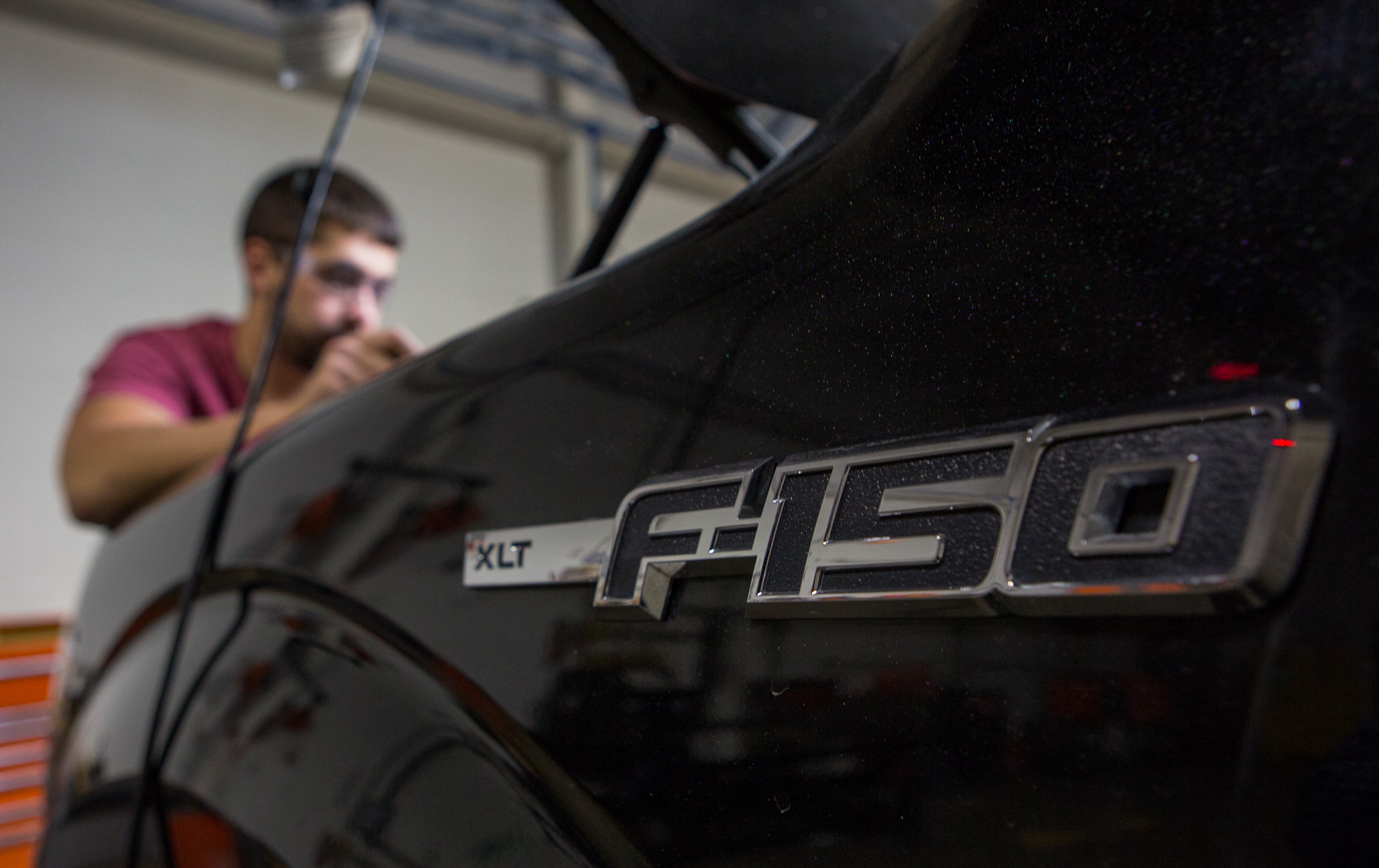
The Chink in the Armor - Aluminum Expansion Tank R&D, Post 1: Stock Review
It goes without saying that the cooling system routed throughout the engine bay of any vehicle works best when the coolant stays in the system. It's one of the main design requirements in fact. If that sounds familiar, that's because this same statement was made about the Ford 7.3 Powerstroke's expansion tank, which begs the question, is there a chink in the armor of Ford's self-proclaimed tough built trucks?
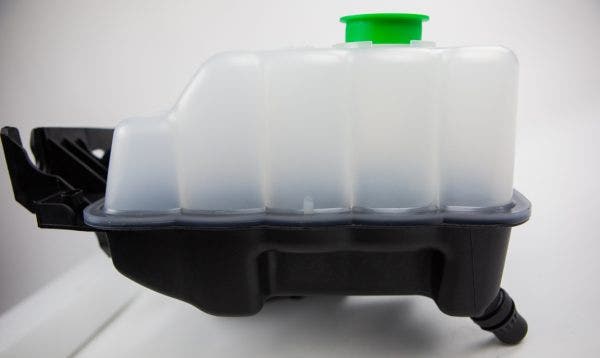
While most of the F-150 is "Built Ford Tough" the factory expansion tank doesn't exactly live up to that standard.
Don't get me wrong, the F-150, for the most part, lives up to the widely recognized moniker. Ford designed them specifically to put up with the constant punishment that the pickup truck was originally intended for -- blasting through rugged terrain all with a loaded bed and a trailer in tow. There's a reason why it's been the best-selling pickup truck for the past 40 years. That being said, nobody's perfect. After a little scouring of the internet, it turns out the twelfth-generation of the F-150 came with a few gremlins from the factory.
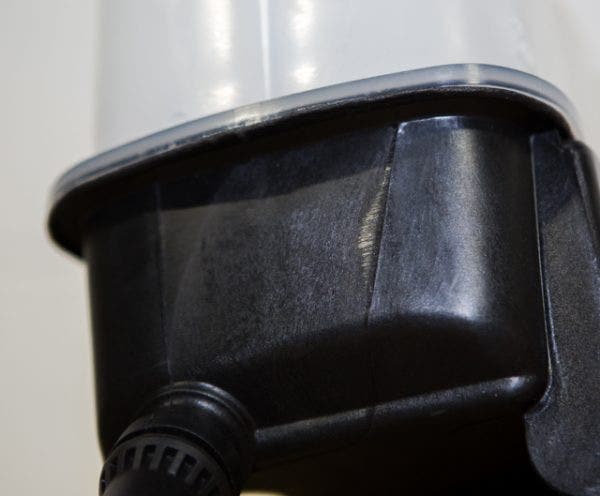
Typically we find that the plastic construction is the root cause of cracks and leaks in expansion tanks, but in this case the front seams split from the tight tolerances and stiffness of the outlet hose.
One of those issues is the whole reason why we're here, which is that this generation has trouble keeping all of its coolant contained in the system. Unlike other leaky factory fluid tanks, the quality of the plastic compound that's solely responsible for the loss of fluid, rather, it's the combination of the seams joining the different sections of the tank that are splitting under pressure and the quick-disconnect on the outlet bung of the tank. The stiffness and small tolerances of the outlet hose cause extra stress on the outlet of the tank, not only exhausting the sealing qualities of the O-ring in the quick-disconnect, but also the culprit for causing split seams.
These problems can be an annoyance for anyone, but that frustration is compounded for this generation of F-150 owners since the dealership repair for replacing the expansion tank and quick-disconnect is costing upwards of $700. A pretty penny, especially when some of these repairs are being performed on trucks with less than 40,000 miles, with the repair only being temporary for some. We here at Mishimoto believe in permanent fixes. Needing a seemingly provisional replacement for a system that is said to be designed to last is unacceptable.
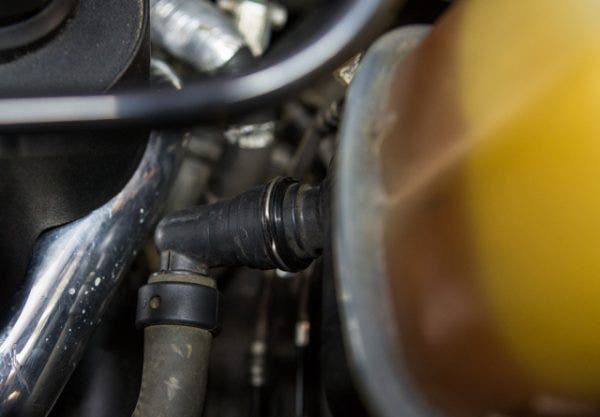
The main cause of your coolant leaking headaches, the quick disconnect.
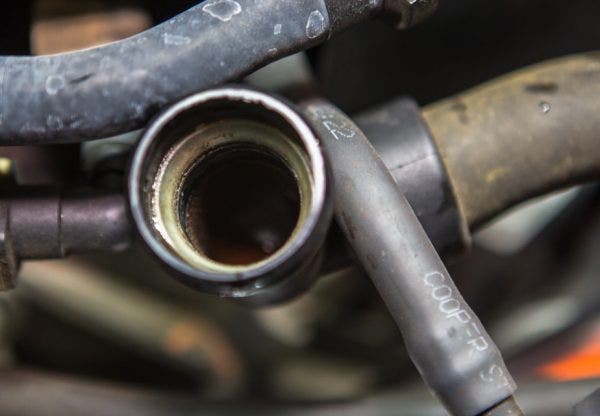
This O-ring is the culprit for your leaky quick disconnect. The stiffness from the hose wears on the rubber, and reduces its sealing ability.
What differentiates this expansion tank project over the plethora of other fluid tanks we've improved on is the fact that the main issue is the outlet hose rather than just the degradation of the plastic construction. There is also the issue of deciding what to do with what else is attached to the stock tank - the airbox. To save valuable time and money in the manufacturing process, Ford mated the expansion tank with the airbox. Combining the two isn't necessarily a bad thing, but it added another piece to the puzzle when we started on our new design.
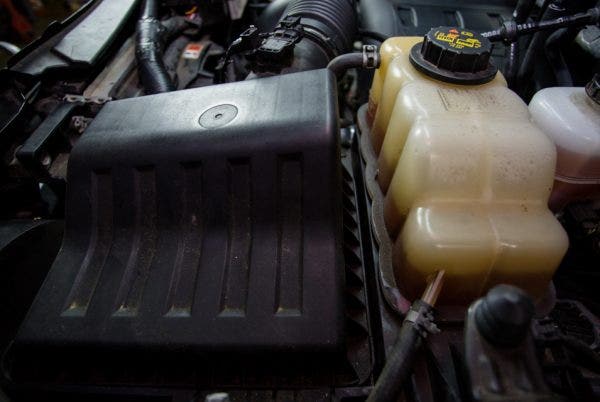
A benefit to adding complexity to one of our projects is that we're left with a few different options in what direction to go. To be specific, we have three options. The first is simple, and is to just replace the tank itself, and include a silicone elbow to eliminate the chronically leaky quick-disconnect fitting. The downside to this option is the fact that the airbox and expansion tank will need to be separated by way of a sawzall. Luckily, the two components are joined by a straight seam, which serves as a cutting template. Since we've already shown off our engineering prowess with intake systems, we have the option to develop one alongside the expansion tank. While we would eliminate the need for any cutting, it would add yet another layer of complexity to the project, not to mention the increase in the end cost to you, which then might make the thought of cutting not seem that bad.
Steve has been working diligently on the new design, and has a 3D printed fitment prototype in the works. Stay tuned for updates on the design plan in the next post.
Thanks for reading!
-Nick




